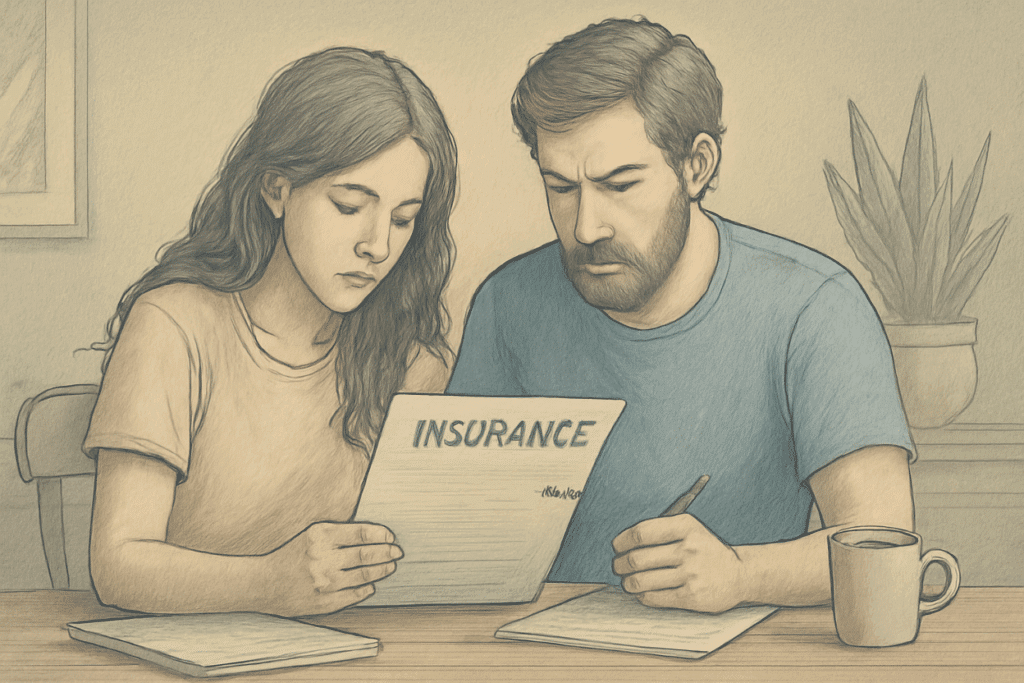Key Takeaways
- Cigna typically offers some out-of-network therapy coverage for PPO plans, but with higher costs than in-network providers.
- Reimbursement rates vary widely (typically 50–80% of Cigna’s determined “reasonable and customary” rates) after meeting your out-of-network deductible.
- You’ll need to pay your therapist upfront and submit claims with detailed superbills for potential reimbursement.
- Your specific coverage depends on your plan type, with PPOs offering the most flexibility compared to HMOs and EPOs.
- At Mission Prep, we often help families manage insurance challenges while providing specialized adolescent mental health treatment, ensuring proper documentation and support throughout the insurance reimbursement process.
Cigna’s Out-of-Network Coverage Basics
Cigna’s approach to covering out-of-network therapy depends primarily on your specific plan type. Most Cigna plans offer some level of out-of-network coverage, but the details vary significantly across different policies. Understanding these variations first before you schedule your first appointment with a non-network provider.
Coverage Varies By Plan
Cigna offers several plan types with different out-of-network benefits:
- Preferred Provider Organization (PPO) plans typically provide the most generous out-of-network coverage, allowing you to see any provider with partial reimbursement.
- Health Maintenance Organization (HMO) plans generally offer limited or no coverage for out-of-network services except in emergencies.
- Exclusive Provider Organization (EPO) plans similarly restrict coverage to in-network providers in most cases.
- Open Access Plus (OAP) plans fall somewhere in between, offering some out-of-network options with varying levels of coverage.
Higher Costs Expected
When you choose an out-of-network therapist, be prepared for significantly higher out-of-pocket costs. You’ll typically face higher deductibles specifically for out-of-network care before Cigna begins sharing costs.
After meeting your deductible, you’ll likely pay coinsurance ranging from 20% to 50% of the “reasonable and customary” rate Cigna determines for therapy services in your area, not necessarily what your therapist actually charges. This gap between what you pay and what Cigna reimburses can be substantial, especially in high-cost areas.
For example, if your therapist charges $200 per session but Cigna determines the reasonable rate is $150, and your plan covers 60% of out-of-network costs after deductible, you’d receive only $90 back (60% of $150). This leaves you paying $110 out-of-pocket per session—much more than typical in-network copays that might be $20–50.
Deductibles Apply First
Before Cigna begins sharing the cost of your out-of-network therapy, you’ll need to satisfy your out-of-network deductible. These deductibles are typically higher than in-network deductibles, sometimes two to three times higher.
For example, while your in-network deductible might be $1,000, your out-of-network deductible could be $2,500 or more. This means you’ll pay the full cost of therapy sessions until you’ve spent $2,500 out-of-pocket for out-of-network care within your plan year.
Mission Prep Healthcare specializes in mental health treatment for teens aged 12-17, offering residential and outpatient programs for anxiety, depression, trauma, and mood disorders. Our therapies include CBT, DBT, EMDR, and TMS, tailored to each adolescent’s needs.
With a structured, supportive environment, we integrate academic support and family involvement to promote lasting recovery. Our goal is to help teens build resilience and regain confidence in their future.
Finding Your Coverage Details

Before scheduling with an out-of-network therapist, verify your specific coverage details. Taking this step can prevent financial surprises and help you budget appropriately for your teen’s mental health care.
Check Your Summary of Benefits
Your Cigna Summary of Benefits (SOB) document is the definitive source for coverage information. This document details your specific plan’s coverage for behavioral health services, including therapy.
Look for the “Mental Health Services” or “Behavioral Health” section, where you’ll find separate listings for in-network and out-of-network coverage. Pay close attention to deductibles, coinsurance percentages, and any maximum visit limitations that may apply.
Call Member Services
Cigna’s Member Services representatives can provide personalized information about your out-of-network benefits. Call the number on the back of your insurance card and specifically ask about out-of-network mental health coverage.
If you do not have your card handy, here are key general customer service numbers for Cigna:
- Cigna Healthcare Customer Service (24/7): 1-800-997-1654
- For medical, dental, and vision coverage inquiries: 1-800-244-6224
We recommend asking: “What percentage of out-of-network therapy does my plan cover after meeting my deductible?” “What is my out-of-network deductible for mental health services?” and “Is there an annual maximum benefit for out-of-network therapy?”
Use Online Portal
Cigna’s online portal (myCigna.com) offers convenient access to your plan details. After logging in, scroll to the “Coverage” section and select “Mental Health/Substance Abuse.” Here you can review your benefits, check your current deductible status, and sometimes even estimate your costs for out-of-network services.
The portal may also allow you to download your complete policy documents for more detailed review.
How Out-of-Network Reimbursement Works
Pay Upfront, Submit Later
When seeing an out-of-network therapist, you’ll pay the full session fee at the time of service. Afterward, you’ll need to submit a claim to Cigna for potential reimbursement. Most therapists don’t bill insurance companies for out-of-network patients, making you responsible for this paperwork. Cigna typically requires claim submission within 180 days of service, though some plans allow up to 12 months.
We recommend setting up a tracking system to monitor your submissions and reimbursements. Many parents find it helpful to submit claims monthly rather than after each session to reduce paperwork. Cigna offers online claim submission through their portal, which is generally faster than mailing physical forms.
Superbill Requirements
To submit a claim, you’ll need a detailed receipt from your therapist called a “superbill.” This document must include specific information for Cigna to process your reimbursement. Required elements include:
- The therapist’s name
- Credentials
- NPI number
- Tax ID
- Your name
- Cigna ID number
- Date of service
- CPT code (procedure code) for the therapy provided
- Diagnosis code (ICD-10 code)
- Session duration
- Amount paid
Missing information can delay processing or result in claim denial.
Before starting therapy, confirm your provider can provide superbills with all required elements. Some therapists charge additional fees for preparing these documents, so clarify this upfront.
Processing Timeframes
Once submitted, Cigna typically processes out-of-network claims within 30 days, though complex claims may take longer. Electronic submissions through the myCigna portal generally process faster than paper claims.

If you haven’t received any response after 30 days, contact Cigna’s Member Services to check your claim status.
After processing, Cigna will send an Explanation of Benefits (EOB) detailing how they calculated your reimbursement, including applied deductibles and coinsurance.
Maximizing Your Benefits
Pre-Authorization Steps
While not always required for routine therapy, obtaining pre-authorization from Cigna before starting out-of-network treatment can sometimes improve your coverage. Call Cigna’s Behavioral Health department directly to inquire about this process. Be prepared to explain why you need to see an out-of-network provider, whether it’s for specialized expertise, continuity of care, or lack of available in-network providers in your area.
Some situations that might qualify for enhanced out-of-network coverage include: needing a specialist not available in-network, requiring a provider who speaks a specific language, or living in an area with insufficient in-network options.

Document all communications with Cigna, including representative names, dates, and reference numbers for future reference.
Appeal Denied Claims
If Cigna denies your out-of-network therapy claim, you have the right to appeal the decision. Start by carefully reviewing your Explanation of Benefits to understand the reason for denial. Common reasons include missing information, coding errors, or determination that the service wasn’t medically necessary.
The appeal process typically begins with a written request for reconsideration, which must include additional supporting documentation. This might include a letter from your therapist explaining the medical necessity of treatment, corrected billing information, or evidence that no suitable in-network providers were available.
Cigna must respond to appeals within timeframes established by law, usually 30–60 days depending on your state.
Negotiate Provider Rates
Many out-of-network therapists are willing to work with patients on their fee structure, especially for ongoing treatment. Some offer sliding scale fees based on income or package rates for committing to multiple sessions. Before beginning treatment, have an honest conversation with your prospective therapist about their fees and whether they offer any flexibility.
Some therapists also offer superbills at no additional charge, while others may charge for this paperwork. Clarify these policies upfront to avoid surprises.
When In-Network Isn’t Right For You
Specialty Care Needs
Teenagers often require therapists with specialized training in specific areas like eating disorders, trauma, or autism spectrum disorders. Unfortunately, insurance networks often lack adequate specialists, particularly for adolescent-specific issues.
When your teen needs specialized care not available within Cigna’s network, going out-of-network becomes a medical necessity rather than a preference.
Provider Relationship Benefits
The therapeutic relationship is fundamental to successful mental health treatment. If your teenager has already established a positive relationship with a therapist who later leaves Cigna’s network, continuing that relationship often produces better outcomes than switching to an in-network provider.
Similarly, if you’ve received a trusted recommendation for a specific therapist who doesn’t accept Cigna, the quality of care may justify the higher cost.
Confidentiality Considerations
When using insurance for therapy, detailed information about diagnosis and treatment becomes part of your insurance records. Some families prefer the enhanced privacy of paying directly for out-of-network care, especially for sensitive issues.
While insurance companies (e.g., Aetna, Optum) are bound by privacy laws, using out-of-network providers and handling reimbursement yourself can provide an additional layer of confidentiality for your teenager’s mental health treatment.
Finding Specialized Teen Mental Health Care at Mission Prep
At Mission Prep, we understand that sometimes the right therapeutic fit isn’t available within your insurance network. That’s why we’ve built our expertise around helping families access specialized adolescent mental health treatment while maximizing their insurance benefits.
Our team provides comprehensive support throughout the insurance process, from obtaining proper documentation to submitting claims and appealing denials when necessary.

What sets Mission Prep apart is our focus on creating the right treatment environment exclusively for teenagers and their unique developmental needs.
Our clinicians are specially trained in adolescent-specific therapeutic approaches, and we maintain the rigorous documentation standards that insurance companies require. We work closely with families to ensure they understand their coverage options and help them make informed decisions about their teenager’s mental health care.
Don’t let insurance complexities prevent your teen from receiving the specialized care they deserve. Contact Mission Prep today to learn how we can help process your Cigna coverage while providing the expert adolescent mental health treatment your family needs.
Frequently Asked Questions (FAQ)
Does Cigna cover online out-of-network therapy?
Cigna typically covers out-of-network telehealth therapy sessions similar to in-person sessions, but specific coverage depends on your plan. Virtual therapy follows the same out-of-network reimbursement rules as face-to-face sessions, including deductibles and coinsurance rates.
However, the therapist must be licensed in the state where you’re physically located during the session, regardless of where their practice is based.
What percentage does Cigna typically reimburse for out-of-network therapy?
After meeting your out-of-network deductible, Cigna typically reimburses between 50–80% of their determined “reasonable and customary” rate for therapy services. This percentage varies by plan type.
For example, PPO plans generally offer higher reimbursement rates than OAP plans. Remember, reimbursement is calculated based on Cigna’s allowed amount, not the actual amount you paid to your therapist.
Can I use HSA funds for out-of-network therapy?
Yes, you can use Health Savings Account (HSA) funds to pay for qualified medical expenses, including out-of-network therapy. This provides a tax advantage since HSA contributions are pre-tax.
You can use your HSA to pay your therapist directly or to reimburse yourself after paying out-of-pocket. Keep detailed records and receipts of all therapy expenses for tax purposes.
How long do I have to submit out-of-network claims to Cigna?
Cigna typically requires out-of-network claims to be submitted within 180 days (6 months) of the date of service. Some plans extend this timeframe to 365 days (1 year). Check your specific plan documents for the exact deadline that applies to you.
We recommend submitting claims monthly rather than waiting until the deadline approaches to ensure timely processing and avoid potential claim denials.
How does Mission Prep help families with Cigna insurance coverage for teen treatment?
Mission Prep assists families by providing compliant documentation for insurance claims, helping navigate pre-authorization processes, and offering guidance on maximizing out-of-network benefits while ensuring teenagers receive specialized adolescent mental health care.
















